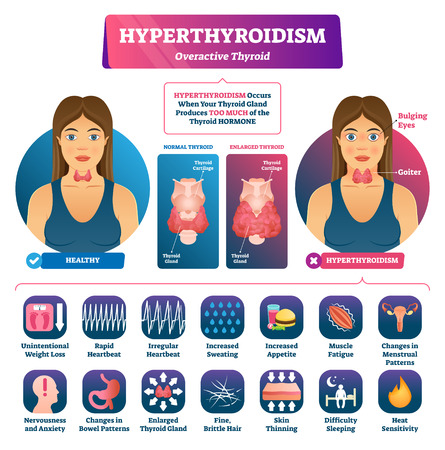Understanding Hyperpigmentation: Definitions and Causes
Hyperpigmentation is a clinical term referring to the darkening or increase in natural colouration of the skin, resulting from excessive melanin production. This condition manifests in various forms, including age spots, melasma, post-inflammatory hyperpigmentation (PIH), and freckles. In the context of the UK’s multicultural society, understanding the underlying causes and prevalence among different ethnic groups is vital for effective diagnosis and management.
The aetiology of hyperpigmentation is multifactorial. Common triggers include chronic sun exposure, hormonal changes (notably during pregnancy or due to oral contraceptives), inflammatory skin disorders such as acne or eczema, and certain medications. Genetic predisposition also plays a significant role, with individuals of African, South Asian, Middle Eastern, and Mediterranean descent demonstrating higher susceptibility due to increased baseline melanin activity. Notably, Fitzpatrick skin types IV–VI are more prone to developing persistent and pronounced pigmentation changes following minor trauma or inflammation.
Within the UK’s diverse population, these ethnic-specific risk factors translate into varied incidence rates and clinical presentations. For example, post-inflammatory hyperpigmentation is particularly common in patients with darker skin tones following even mild acne or injury. Conversely, lighter-skinned individuals may experience more pronounced lentigines related to cumulative UV damage. The interplay between genetic background and environmental exposures underscores the importance of tailored dermatological assessment for each patient group.
In summary, appreciating the complexity of hyperpigmentation in relation to ethnic diversity is crucial for UK clinicians. Understanding how genetic, environmental, and cultural factors influence its development sets the stage for personalising prevention and treatment strategies across the nation’s multicultural landscape.
2. Unique Challenges for Ethnic Skin in the UK
Hyperpigmentation affects individuals across all skin types, but those with ethnic skin—particularly Fitzpatrick skin types IV to VI—face distinct challenges in the UK context. The biological and cultural diversity among Black African, South Asian, Caribbean, Middle Eastern, and mixed-heritage communities shapes both the manifestation and management of hyperpigmentation.
Biological Factors Influencing Pigmentation
Ethnic skin is characterised by increased melanin activity, which offers some photoprotection but also predisposes individuals to uneven pigmentation when triggered by inflammation, hormonal fluctuations, or environmental insults. Melanocyte density and reactivity vary between populations, influencing both baseline skin tone and susceptibility to conditions such as post-inflammatory hyperpigmentation (PIH) or melasma.
| Ethnic Group | Typical Hyperpigmentation Presentation | Common Triggers |
|---|---|---|
| Black African/Caribbean | PIH, dermatosis papulosa nigra | Acne, minor trauma, eczema |
| South Asian | Melasma, PIH | Pregnancy, oral contraceptives, sun exposure |
| Middle Eastern | Lichen planus pigmentosus, melasma | Cultural skin practices, hormonal factors |
| Mixed Heritage | Variable patterns; overlap of above conditions | Genetic predisposition, combined triggers |
Cultural Factors and Perceptions of Skin Health
Cultural attitudes towards skin colour and visible pigmentation influence patient expectations and treatment adherence. In many communities across the UK, lighter skin may be culturally preferred, leading to increased demand for rapid results or unregulated lightening products—posing further risks of irritation and rebound hyperpigmentation.
The UK Environment: A Unique Set of Triggers
The British climate presents its own challenges. While lower UV indices may reduce some risks associated with sun-induced pigmentation, urban pollution—particularly particulate matter in cities like London and Birmingham—can exacerbate oxidative stress and trigger inflammatory responses in pigmented skin. Seasonal variation in sunlight also complicates consistent skincare routines and impacts vitamin D synthesis, which can indirectly influence skin health.
Navigating Patient Diversity in Clinical Practice
The intersection of biology, culture, and environment means that practitioners in the UK must adopt a nuanced approach. Understanding these unique challenges is essential for designing personalised protocols that deliver both safety and efficacy for the nation’s diverse population.

3. Diagnostic Approaches for a Diverse Patient Base
In the UK, clinicians are presented with an increasingly diverse patient population, making it imperative to adapt diagnostic strategies for hyperpigmentation that reflect this variety. The British context demands not only technical precision but also cultural sensitivity when evaluating patients with different skin phototypes. Best practice begins with recognising that standard assessment methods may yield variable results depending on the patient’s ethnic background. For example, visual grading scales and digital imaging tools can be less reliable in darker skin tones due to contrast limitations, potentially leading to underdiagnosis or misclassification of pigmentation disorders.
Comprehensive diagnosis requires a combination of clinical acumen and tailored tools. Clinicians should employ validated assessment protocols that account for nuances in melanin distribution and the presentation of post-inflammatory hyperpigmentation or melasma in skin of colour. Dermatoscopy and Wood’s lamp examination can offer valuable adjunctive insights, but their interpretation must be adjusted according to the patients phototype to avoid diagnostic pitfalls. Moreover, practitioners should be alert to subtle variations in presentation; what may appear as erythema in lighter skin could manifest as violaceous or brownish discolouration in deeper tones, necessitating a heightened awareness and experience.
Culturally competent history taking is paramount within British clinical practice. It involves not only recording medical history but also understanding cultural skincare practices, product use (such as traditional lightening creams), and attitudes towards pigmentation. Open-ended questioning and a non-judgemental approach foster trust and encourage disclosure of relevant lifestyle factors or home remedies that might influence diagnosis or management. In multi-ethnic communities across the UK, this level of engagement ensures that care is both respectful and individually tailored, ultimately improving outcomes for patients from all backgrounds.
4. Evidence-Based Treatment Personalisation
For practitioners in the UK, the personalisation of hyperpigmentation management for patients with ethnic skin is paramount. With a multicultural population representing Fitzpatrick skin types IV–VI, evidence-based strategies must be adapted to address the unique biological and cultural factors influencing pigmentation disorders. This section reviews topical, systemic, and procedural therapies best suited for darker skin tones, with a focus on safety, efficacy, and patient-specific adaptation.
Topical Therapies: Tailoring to Skin Type
Topical agents remain the first-line treatment for hyperpigmentation in ethnic skin. However, product selection and regimen adjustment are crucial to minimise irritant reactions, which can exacerbate post-inflammatory hyperpigmentation (PIH).
| Agent | Mechanism | Suitability for Ethnic Skin | Key Considerations |
|---|---|---|---|
| Hydroquinone | Melanin synthesis inhibition | Effective but risk of ochronosis; short-term use recommended | Pulsed regimens; avoid prolonged use |
| Azelaic Acid | Tyrosinase inhibition; anti-inflammatory | Well-tolerated; suitable for PIH and melasma | Minimal irritation; safe for long-term use |
| Kojic Acid | Chelates copper in tyrosinase enzyme | Mildly effective; often combined with other agents | Monitor for sensitivity reactions |
| Tretinoin/Retinoids | Increases cell turnover; pigment dispersion | Efficacious but can cause irritation in darker skin types | Low concentrations; gradual introduction advised |
| Corticosteroids (topical) | Anti-inflammatory and depigmenting synergy in combination creams (e.g., triple therapy) | Short-term adjunctive use only due to atrophy risk | Avoid monotherapy; limit duration |
Systemic Therapies: Limited but Evolving Role
The use of oral agents is less common but may be considered for recalcitrant cases or widespread involvement. Tranexamic acid has emerged as a promising option, especially for melasma in Asian and Black British populations. However, its off-label status requires careful risk-benefit assessment and monitoring for thromboembolic events.
Oral Tranexamic Acid: Key Points for UK Practice
- Dose typically 250mg twice daily under specialist supervision.
- Assess personal and family history of thrombosis before initiation.
- Counsel patients regarding potential side effects and contraindications.
Procedural Interventions: Safety First in Ethnic Skin
Aesthetic procedures such as chemical peels and laser therapy require significant adaptation when treating patients with darker skin tones prevalent in the UK. The risk of PIH, keloid formation, and hypopigmentation is elevated if inappropriate techniques or energies are used.
| Treatment Modality | Recommended Adaptations for Darker Skin Types (IV–VI) |
|---|---|
| Chemical Peels (e.g., glycolic acid, salicylic acid) | Low-concentration, superficial peels preferred; pre-treatment with topical retinoids or hydroquinone may reduce PIH risk. |
| Laser Therapy (e.g., Q-switched Nd:YAG 1064nm) | Select longer wavelengths; conservative energy settings; test spot protocol essential. |
| Microneedling | Promising results for melasma/PIH with minimal downtime; combine with topical serums for enhanced efficacy. |
Patient-Specific Considerations for UK Practitioners:
- Cultural competence is vital—discuss expectations regarding skin tone changes sensitively.
- Sunscreen use is mandatory year-round to prevent recurrence—recommend broad-spectrum SPF 30+ formulations suitable for deeper skin tones (non-comedogenic, no white cast).
- Lifestyle factors, including cosmetic product choices and sun exposure habits, should be addressed in patient education.
The diversity of the UK’s population necessitates a highly individualised approach to hyperpigmentation management in ethnic skin. By leveraging evidence-based modalities while respecting unique cutaneous biology and social context, clinicians can safely optimise outcomes across all communities.
5. Communication and Patient Engagement in a Multicultural Context
Delivering effective care for hyperpigmentation in the UK’s ethnically diverse population requires more than just clinical expertise; it demands culturally attuned communication and patient engagement strategies. Navigating sensitive topics—such as skin tone, pigmentation concerns, and treatment expectations—necessitates an awareness of different cultural norms, beliefs, and perceptions surrounding skin health.
Strategies for Sensitive Patient Education
Clinicians should approach patient education with empathy and cultural sensitivity. Begin by acknowledging the wide spectrum of skin tones represented within the UK and the unique experiences of each individual. Utilising plain English and avoiding jargon ensures clear understanding, while providing translated materials or access to interpreters can bridge language barriers. Incorporating visual aids that reflect diverse skin types enhances relatability and trust.
Managing Expectations: A Collaborative Approach
Setting realistic expectations is crucial, particularly when treating hyperpigmentation in ethnic skin. Engage patients in open dialogues about achievable outcomes, timeframes, and potential side effects. Encourage questions and validate concerns—especially those influenced by cultural beauty standards or historical mistrust of healthcare systems. Jointly developing personalised treatment plans fosters shared decision-making and empowers patients to take an active role in their care.
Navigating Cultural Nuances in Care Delivery
The UK’s multicultural landscape means practitioners must remain adaptable to varying beliefs about pigmentation and aesthetics. Some communities may view certain forms of hyperpigmentation as a normal part of ageing, while others may experience stigma or distress. Being mindful of these perspectives allows clinicians to tailor their messaging and support, ensuring that all patients feel respected and understood.
Ultimately, fostering culturally competent communication strengthens therapeutic relationships and optimises clinical outcomes for patients from all backgrounds dealing with hyperpigmentation concerns.
6. Emerging Trends and Innovation in Hyperpigmentation Care
The landscape of hyperpigmentation management is rapidly evolving, with the UK’s multicultural population driving demand for tailored solutions that reflect a broad spectrum of skin tones and genetic backgrounds. Recent advancements are reshaping both clinical practice and patient engagement, aiming to bridge gaps in care for ethnic skin types.
Cutting-Edge Research and Personalised Approaches
Innovative research is delving deeper into the molecular mechanisms underpinning pigmentary disorders among diverse populations. UK-based studies increasingly focus on genomic factors influencing melanin production and inflammatory responses unique to Afro-Caribbean, South Asian, and mixed-heritage skin. Such insights are fuelling the development of targeted topical agents—such as tyrosinase inhibitors and botanical extracts—engineered for reduced irritation and enhanced efficacy across Fitzpatrick skin types IV–VI.
Digital Tools Empowering Clinicians and Patients
The integration of digital health solutions is transforming diagnosis, monitoring, and treatment adherence. AI-driven imaging platforms now offer precise pigmentation mapping, enabling clinicians to track progress objectively in patients with richly pigmented skin. Teledermatology services are making specialist advice more accessible to remote or underserved communities, while mobile apps provide culturally relevant education, self-assessment tools, and reminders personalised to language preferences common within the UK’s major ethnic groups.
Future Therapies: From Biologics to Microbiome Modulation
Next-generation therapies hold promise for addressing persistent unmet needs. Early-stage clinical trials are exploring biologics that modulate cytokine pathways implicated in post-inflammatory hyperpigmentation prevalent among darker skin types. Additionally, research into the skin microbiome is uncovering links between microbial diversity and pigmentary balance, suggesting future probiotic or prebiotic interventions tailored to ethnic skin.
Towards Equitable Dermatological Innovation
These emerging trends underscore a shift towards precision dermatology—where hyperpigmentation care in the UK goes beyond ‘one-size-fits-all’. By harnessing cutting-edge science and digital innovation, clinicians can deliver more equitable, culturally competent solutions that resonate with the lived experiences of Britain’s diverse patient populations. As these innovations continue to mature, they offer hope for narrowing disparities in outcomes and improving quality of life for all affected by hyperpigmentation.


